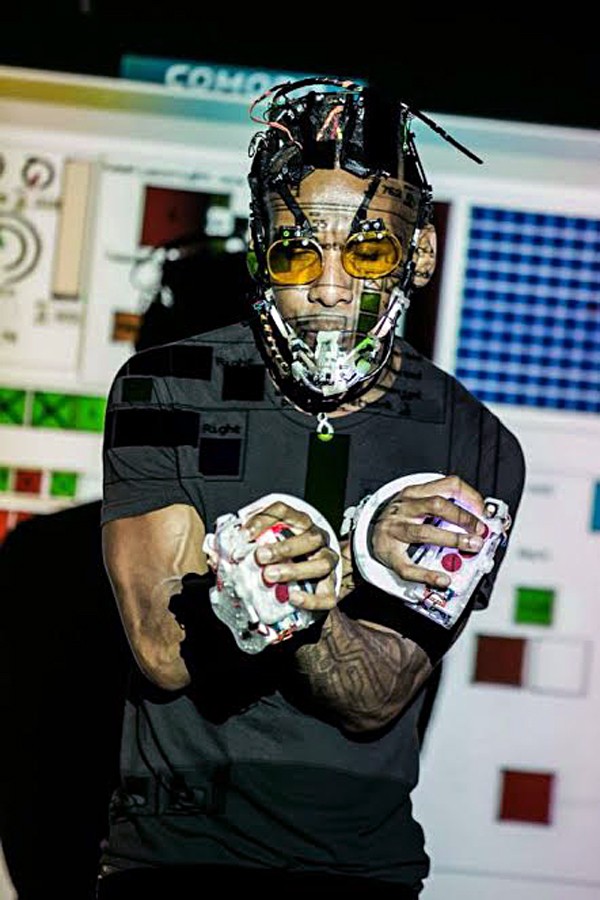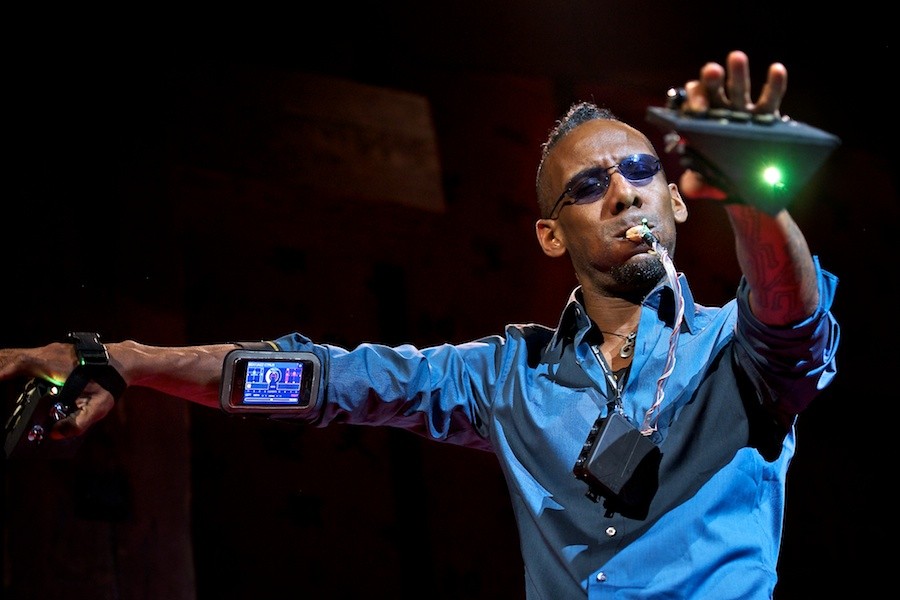For years, Ibuka, Mississippi-native Onyx Ashanti was just another street busker playing pop standards for tourists for a little spare change. But something just wasn’t right.
“The sound of the sax is beautiful, but it didn’t say everything I needed to say. I wanted to be able to speak in beats and keyboards and synthesizers and these other sounds that the saxophone couldn’t make,” Ashanti said.

Onyx Ashanti
So Ashanti invented a new instrument, what he calls the “beatjazz system.” It’s a sort of digital saxophone with mini-keyboards that fit over Ashanti’s hands and a futuristic headset that he straps around his face. The sound is a sort of a hybrid electronic sax with hints of early ’90s rave music.
Parts for his beatjazz system were printed on a 3D printer. And because beatjazz is constantly evolving, Ashanti carries a mobile 3D printer with him on his travels. He can design and print new pieces on the go.
Ashanti will be performing beatjazz and speaking at Forge on Broad on Friday, September 19th, at 7 p.m. Attendees with a USB or wifi-enabled device will be able to download a free recording of the performance.
After Ashanti developed beatjazz, he ditched the pop standards in favor of original electronic music.
“I thought I was going to go crazy if I had to play another Earth, Wind, and Fire song,” said Ashanti, who, in 2011, gave a TED Talk about his beatjazz system.
He began busking with beatjazz in Oakland and later in Berlin, where he only accepted tips in the form of Bitcoin. After he returned to the U.S., he went back to accepting traditional tips when he found that most Americans didn’t even know what Bitcoin was.
“Here, it’s put in the vein of a PayPal, rather than the truly revolutionary thing that it is. I still give people the option to tip me in Bitcoin when I busk,” Ashanti said. “But 99 percent of the people I’ve encountered since I’ve been here only vaguely know what it is. It worked much better in Berlin.”
